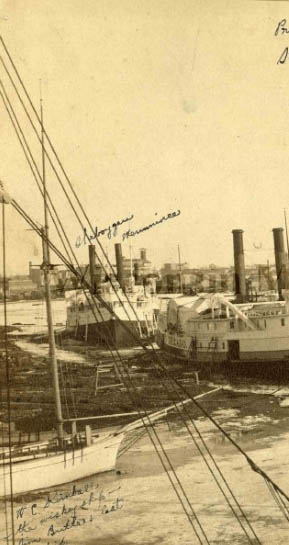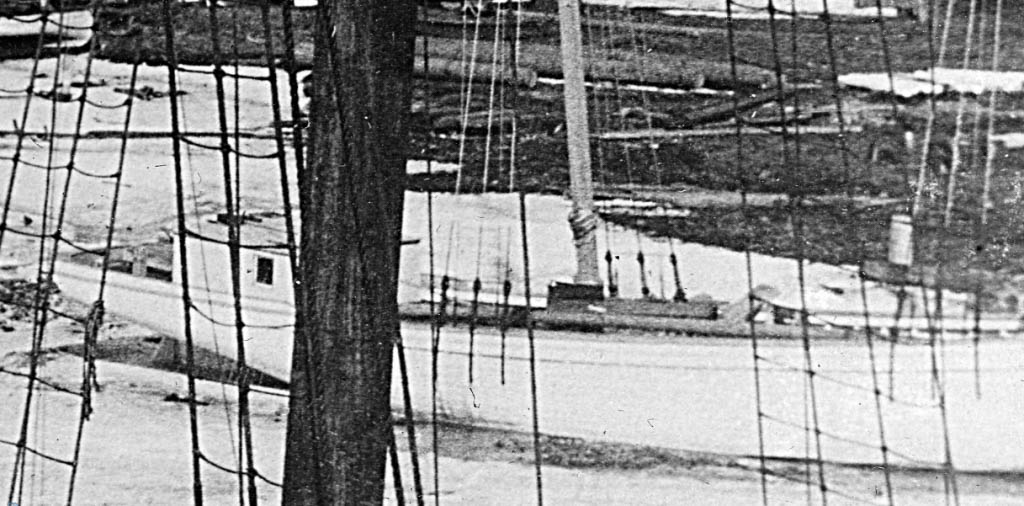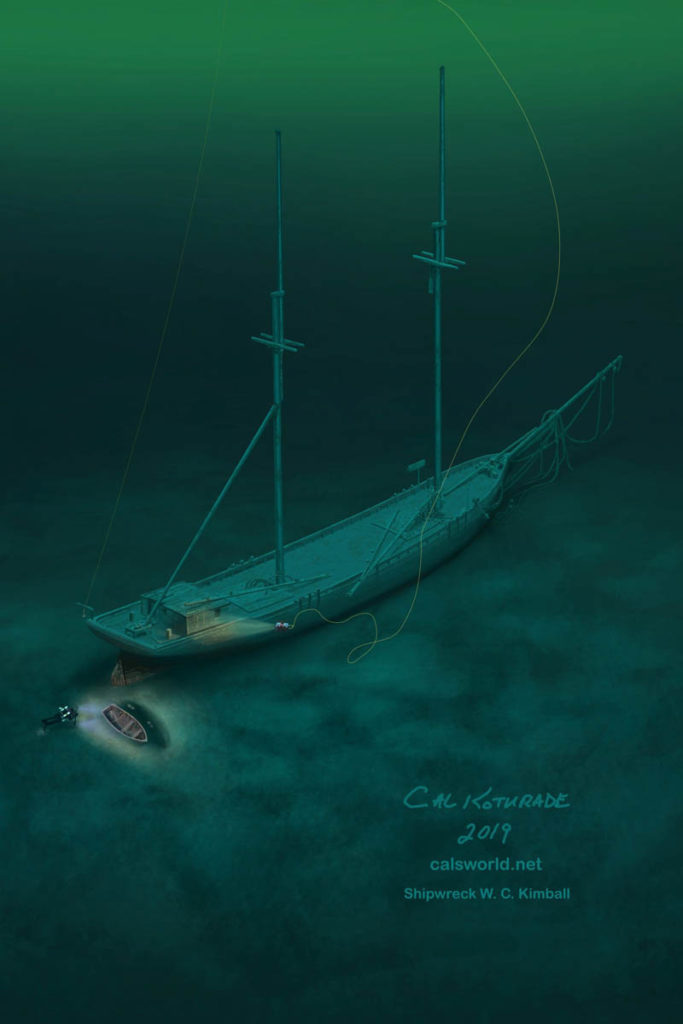Schooner’s disappearance a mystery
It’s hard to imagine any significant connection between forest fires and a shipwreck, but that’s what some people in Northport thought when a little 40-ton schooner, KIMBALL, failed to return to her home berth after a trip to Manistee. They thought a passing steamer might have run down the KIMBALL while a dense shroud of smoke over the region enveloped both of them.
Forest fires had been breaking out all over the Grand Traverse region that unusually warm, dry spring of 1891. The most trying day was Saturday, May 8.
The air was filled with wood smoke, flying cinders and burning leaves that fell for many hours. At night, the sky was red with flames in every direction.
In Traverse City, most of the land east and southeast was burned over. Fire coma over the hill behind the asylum and burned 150 cords of wood and lots of fence posts. D.H. Day lost 1 million feet of hardwood logs at Glen Haven. Isolated barns, houses and small shops burned down all over the Grand Traverse and Leelanau counties. People prayed for rain.
The KIMBALL left Manistee for Northport on May 7, 1891, with a cargo of salt and wood shingles. On board were Capt. James Stevens and Mate Charles Kehl, part owners of the boat, and William P. Wolfe. All were members of prominent Northport families. Another passenger was a young man from Norway, who had relatives in Suttons Bay, where the schooner was headed.
After clearing the Manistee harbor, the KIMBALL sailed north for the Manitou Passage-into oblivion, never to be seen again.

A few days later, scattered wreckage began to wash ashore off Cathead Point at the northern end of the Leelanau Peninsula. Several days later, an Elk Rapids Iron Works steam barge passed through a lot of wreckage and wood shingles that most certainly came from the KIMBALL. The steamer Williams of Charlevoix was dispatched to search for survivors, but none was found and no bodies ever were recovered.
“We were on our way to South Manitou Island and I wanted to show my cousins how we look for shipwrecks. The sonar was only running for a few minutes when something interesting appeared on the sonar display screen. I logged the position in my GPS and we continued to island to spend the day exploring. I returned to the site about a week later to better survey the site. The sonar showed something rising 90 feet off the bottom, which is very unusual.” Described Richardson.

The sonar target rested in 300 feet of water, well out of the diving range of Richardson. Realizing this, Richardson called his good friend Steve Wimer, an experienced rebreather diver and underwater photographer from Milwaukee, Wisconsin.
On September 30th, Richardson, Wimer and friend Brent Tompkins returned to the site and Wimer was able to photograph the mysterious ghost ship. Wimer described the small sailing vessel as being “the most intact shipwreck I have ever encountered”.
After reviewing images of the shipwreck taken by Wimer, one mystery was solved, but a host of other mysteries were revealed. The target was indeed a small sailing vessel, sixty to seventy feet in length, but no vessels matching those dimensions where ever reported missing in that area. The images also revealed a lifeboat still present at the stern of the vessel, which is very unusual considering the schooner sank within a few miles of multiple shores. The images also displayed an uncommon feature of the sunken craft, a sleek clipper bow, which could be a helpful clue in identifying the mystery schooner.

Over the next few months Richardson reviewed the underwater images and old records of missing ships until he stumbled across a missing schooner which fit the description. The EMILY. The EMILY was a small two masted coastal schooner that vanished in a gale while travelling from Milwaukee to Sand Bay in early April of 1857. She disappeared with her captain, his wife and a crew of four unknown sailors. No trace of the EMILY was ever found. Old shipping records indicated the EMILY had a clipper bow.
Over the winter Richardson was visited by friend and fellow shipwreck hunter Paul Ehorn. Upon reviewing Wimer’s images together, Ehorn pointed out what he thought was iron rope, the equivalent to today’s steel cable, obscured by quagga mussels.
Quagga mussels are an invasive species of freshwater mussels and are cousins to the better-known zebra mussel. Quagga mussels are slightly larger and more resilient than their smaller cousins and now represent of 90% of the mussel population in Lake Michigan. While cleaning algae from the water and drastically improving underwater visibility, the quaggas also coat the lake bottom and shipwrecks, often hiding small details.
Iron rope wasn’t used on Great Lakes vessels before the end of the civil war and use wasn’t widespread until sometime in the 1870s. Many vessels were refit with iron rope in the 1870s because it was more cost efficient than refitting with hemp rope, which wore out fairly quickly. Since the EMILY disappeared in 1857, there is no way iron rope would be present on the wrecksite.
The iron rope revelation led to a thorough and time-consuming search of the Patrick Labadie Great Lakes Maritime Collection. Approximately 6000 schooner records were looked at individually and many of those records were cross referenced with other online Great Lakes databases and old newspaper archives. At the end of this three-week search, the W.C. KIMBALL was the leading candidate among the nearly dozen or so possibilities.
The schooner bow was significant to narrowing down which vessel this could be. The clipper bow was a feature on many schooners built in Manitowoc and later Milwaukee.
The lifeboat’s presence was also significant because the vessel was within several miles of multiple shores. If the crew was capable, or even still aboard, they would have accessed the small boat and abandoned ship. The fact that this vessel sank with the lifeboat still attached to the stern tells us that either the lifeboat wasn’t accessible, possibly because of ice, or the crew wasn’t aboard the vessel when she foundered.





